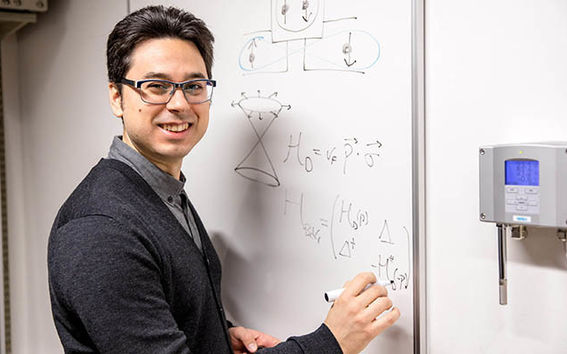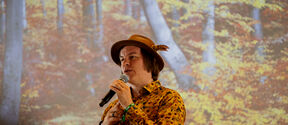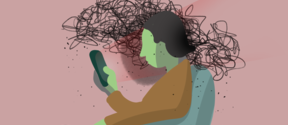Marie Skłodowska-Curie Fellowship awarded to study spin entanglement and Dirac materials

Entangled electrons enable instantaneous exchange of information over large distances, a phenomenon based on the fundamental laws of quantum mechanics. To date, quantum entanglement has mainly been demonstrated using light (photons).
Aalto University researcher Pablo Burset intends to show proof of entanglement in electronic devices, isolating entangled pairs of electrons from the flow of current. To be able to do this, he is working on an exciting new device, a Cooper pair splitter, that spatially separates entangled pairs of electrons coming out of a superconductor.
“Quantum entanglement of photons is already being used in novel communication protocols that are safe against eavesdropping. Cooper pair splitter devices could be the basis for developing many quantum applications with a practical use in our everyday lives. In the long term they could also be used to develop a qubit, the building block of a future quantum computer,” says Burset.
According to Burset, cutting-edge experimental and theoretical works to date have been unable to resolve individual particles from the flow of current, which contains billions of entangled Cooper pairs. To harness the entanglement information for future applications, it is critical to isolate individual electron pairs.
Dirac materials enable new ways to design quantum devices
Here, the proposed device is based on graphene and topological insulators. Surface electrons in these seemingly unrelated novel materials behave like massless particles that travel at high speeds, much like light. To describe them, researchers use Dirac’s equation to explain the behaviour of exotic particles. Materials with such unusual properties are dubbed Dirac materials and provide unique and novel ways to design quantum devices.
In addition to the qubit for quantum computers, a reduced number of Cooper pair splitters can be used as a quantum simulator.
“Quantum simulators can be used to solve specific problems beyond the reach of current supercomputers. They would be less versatile than quantum computers, but easier to implement since they do not require complete control of every component,” explains Burset.
Pablo Burset works at the Department of Applied Physics with Professor Christian Flindt who leads the Quantum Transport research team at Aalto University.
“The controlled generation of entanglement in an electronic device would be a scientific breakthrough which could lead to revolutionary changes in society and industry. Potential applications range from the design of novel materials and medicines, to solving complex mathematical equations from such diverse fields as economics and high-energy physics”, says Prof. Flindt, also director of Centre for Quantum Engineering (CQE) at Aalto.
The Marie Skłodowska-Curie Fellowship funding is intended to support the mobility of researchers in particular.
“The mobility offered by this Fellowship provides an excellent opportunity to develop my research in Prof. Flindt’s group and maintain my collaboration with researchers from Spain, Germany and Japan,” says Burset.
Website of the Quantum Transport research group
Read the story of another researcher, Konstantinos Daskalakis, who has as well been awarded the Marie Skłodowska-Curie Fellowship.
Marie Sklodowska-Curie actions Individual Fellowships provide grants for experienced researchers to support their mobility, research projects and training both within and outside Europe. The scheme is part of EU's Horizon 2020 Framework Programme for Research and Innovation, and is meant for researchers with a doctoral degree or at least four year’s full-time research experience.
Read more news

Having autonomy in your life is more important in wealthier countries, says new research on well-being
A worldwide analysis reveals a nuanced relationship between happiness, volition and wealth.
Retail therapy fail? Online shopping linked to stress, says study
Shopping, social media use and gaming are the most likely online activities to correlate with stress, according to a new study
Aalto Inventors innovation training coming for hydrogen, quantum and microelectronics researchers this spring
Connect with industry and academic thought-leaders and gain widely applicable skills in communication, intellectual property, and business.






